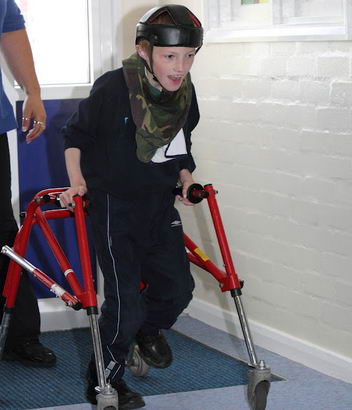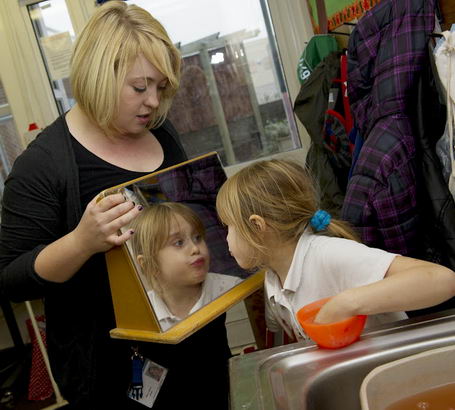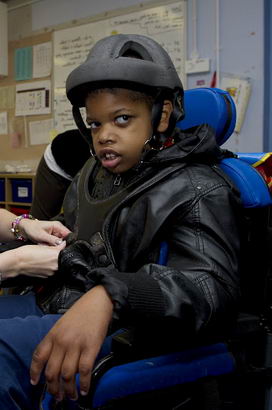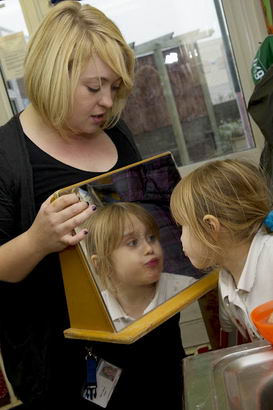
There is debate about what is meant by the terms 'disabled' and 'disability', and how to use them, in different contexts.
If children/young people are disabled they have entitlements arising from their assessed needs. This section identifies what counts as 'disability' within the context of different Acts of Parliament.

What is your understanding of what constitutes a disability?
How would you identify and define characteristics in such a way that they could be applied to differentiate between 'disabled' and 'non-disabled' individuals?
Further discussion of the application of these definitions is available in the Equality Act 2010 'Guidance…relating to the definition of disability’.
The implications of the Equality Act 2010 for schools and services are considered
later
in this module.
Take a look at the Equality Act 2010 Guidance to find out more.
Impairment
Substantial
Long term
Normal day-to-day activities
The Act itself does not define the term 'impairment' and case law has established that a formal medical diagnosis is not always required, as long as it is proven that functions are impaired. However, if no organic or mental cause of symptoms can be found, it may be difficult to secure a tribunal endorsement that a person has an impairment.
The provision for a specifically described condition to be (or not to be) an impairment may be made by Parliament through Regulations.
Return
The term 'substantial' means 'more than minor or trivial' (section 212(1)). However, the cumulative effect of a number of 'minor' impairments may be considered as 'substantial'.
Where the impact of an impairment is reduced or eliminated through measures taken to correct it (eg medication, a prosthesis or other aid), the effects must be considered as if these measures were not taken. This does not apply where spectacles or contact lenses are used to correct sight.
Return
Schedule 1 (Part 1, paragraph 2(1)) of the Act states that:
The effect of an impairment is long term if:
(a) It has lasted for at least 12 months.
(b) It is likely to last for at least 12 months.
(c) It is likely to last for the rest of the life of the person affected.
If the substantial effects of a long term impairment cease, it is still considered as continuing if those effects are likely to recur.
Regulations may prescribe circumstances where, despite these circumstances, an effect should (or should not) be considered long term.
For example, a severe disfigurement that is deemed to have had a long term adverse effect on the ability of the person to carry out normal day-to-day activities.
Return
These are actions that are carried out by most people on a daily basis, and there is considerable case law to assist with determining which activities are included.
The Equality and Human Rights Commission defines ‘normal day-to-day activities‘ as involving any of the following:
- Mobility;
- Doing something with your hands;
- Physical coordination;
- Continence (controlling your bladder and bowels);
- Ability to lift, carry or move everyday objects;
- Speech, hearing or eyesight;
- Memory or ability to concentrate, learn or understand;
- Perception of the risk of physical danger.
Return

So far in this section we have considered the applications of the Equality Act 2010, however the Children Act 1989 is also relevant as it contains a definition of disability that is applicable within other related legislation.
Think of a child/young person you know well, in or out of school, and consider whether or not they would fall within the legislative definition of 'disabled'.
1. Does the child/young person have difficulty with 'normal day-to-day activities'? You might want to consider issues relating (but not limited) to:
- Mobility: getting to/from school, moving about the school and/or going on school visits;
- Manual dexterity: holding a pen, pencil or book, using tools in design and technology, playing a musical instrument, throwing and catching a ball;
- Physical coordination: washing or dressing, taking part in games and PE.
- Ability to lift, carry or otherwise move everyday objects: carrying
a full school bag or other fairly
heavy items; - Continence: going to the toilet or controlling the need to go to the toilet;
- Speech: communicating with others or understanding what others are saying; how they express themselves orally or in writing;
- Hearing: hearing what people say in person or on a video, DVD, radio or tape recording;
- Eyesight: ability to see clearly (with spectacles/contact lenses where necessary), including any visual presentations in the classroom;
- Memory or ability to concentrate, learn or understand: work in school including reading, writing, number work or understanding information;
- Perception of the risk of physical danger: inability to recognise danger, eg when jumping from a height, touching hot objects or crossing roads.

2. Are any difficulties, that the child/young person has, caused by an underlying impairment or condition?
3. Does the child/young person have any impairment or condition that has lasted, or is it likely to last, more than 12 months?
4. Is the effect of any impairment or condition that the child/young person has 'more than minor or trivial'?
If you have answered yes to questions 1 to 4, then the child/young person is probably disabled. If they receive medical or other treatment to reduce or remove the effects of their condition, they are still likely to be regarded as disabled. The test is whether the effects would recur if the treatment was stopped.
Children with disabilities up to age 18 are defined as
'in need' by section
17(10(c)) of the
Children
Act 1989 and are, therefore, entitled to a range of support services, dependent
upon their particular circumstances.
However, the definition of disability given in Part III of this Act is more medically oriented than that within the Equality Act 2010.
Section 17(11) of the Children Act 1989 states:
"... a child is disabled if he is blind, deaf or dumb or suffers from mental disorder of any kind or is substantially and permanently handicapped by illness, injury or congenital deformity or such other disability as may be prescribed."
The definition within the Children Act 1989 is the definition that also applies for children/young people under the Chronically Sick and Disabled Persons Act 1970 (section 28a).

Under the Children and Families Act 2014 (section 22), local authorities have a proactive duty to identify all the disabled children and young people in their area and all the children and young people in their area who have, or may have, special educational needs. As a pro-active duty, they will need to put in place systems for gathering this information from educational institutions and other services.
Under the Children and Families Act 2014 (section 23), local authorities are responsible for all children and young people with special educational needs in their area. This has significant implications for the assessment of children and young people and service commissioning.
A local authority is responsible for a child or young person if they have been identified by the authority or brought to their attention as someone who has, or may have, special educational needs. Anyone is able to bring a child or young person to the attention of the local authority.
In order to identify the extent and level of services needed to comply with their general duty towards children with disabilities and special educational needs, local authorities have to keep a register of disabled children (Children Act 1989 schedule 2) but not of children with special educational needs. The register helps local authorities and other agencies to plan services for disabled children.
Whoever (health professional, education professional or social worker) is the first to identify that a child has a disability is required to discuss all available services with the parents. This should include discussion of the registration process.
If clinical commissioning groups (CCGs), NHS Trusts and NHS Foundation Trusts believe that a child under compulsory school age is disabled, has, or probably has, special educational needs, Section 23 of the Act requires them to:
- tell the child's parents and give them the opportunity to discuss this with an officer of the group or trust; and
- tell the appropriate local authority.

Parents of disabled children are not required to register their children, and children
do not have to be on the register to have access to services.
Because of this, local authorities cannot be sure of the number of disabled children who may require services. Without accurate records local authorities may find it difficult to target resources.
Register of children with disabilities
- Is your school/setting aware of which disabled pupils are and are not on
the local
authority register? - If so, are any pupils considered disabled
but not registered?
